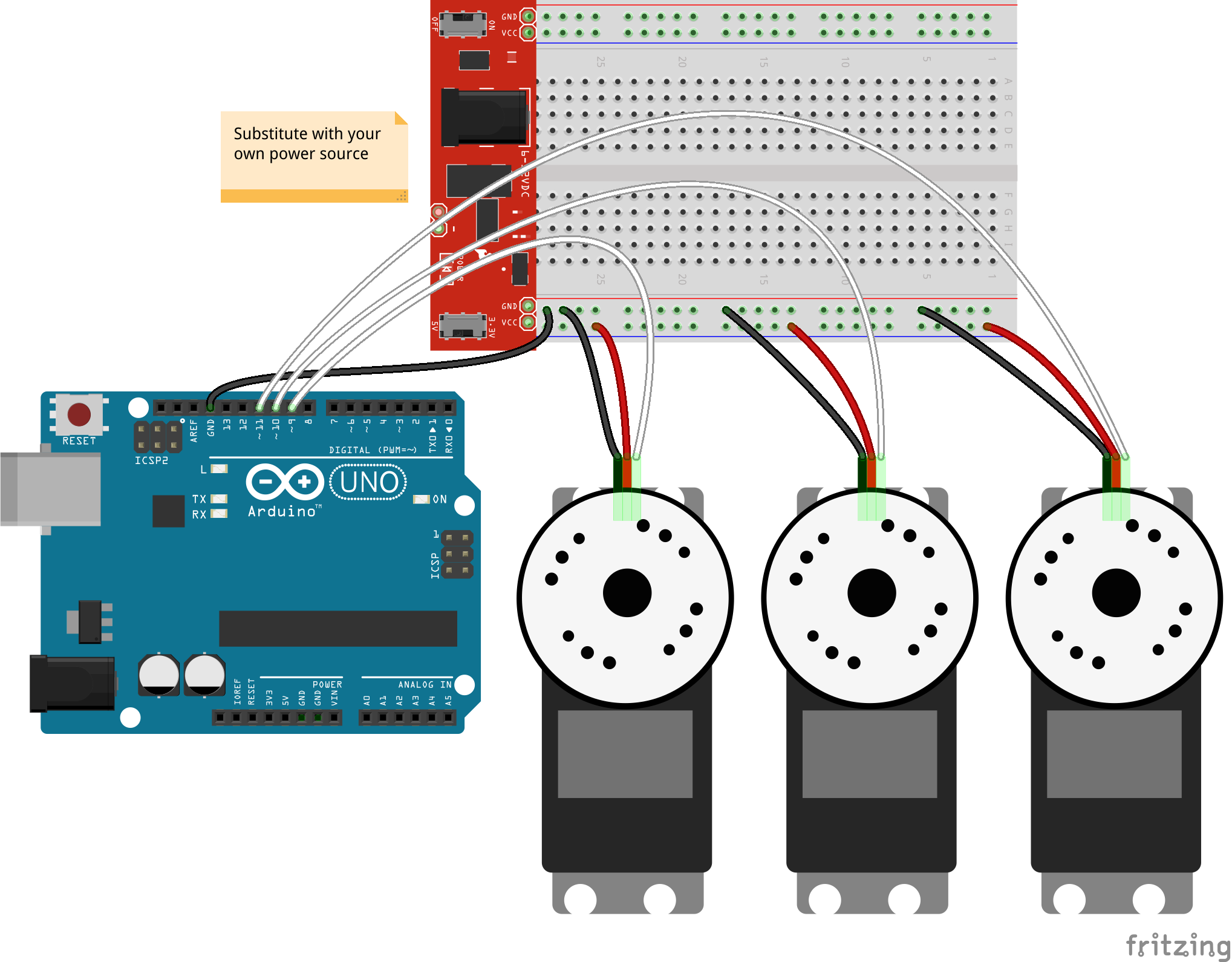Servos on pins 9, 10, 11
Servos connected to pins 9, 10, and 11. Requires servos on pins that support PWM (usually denoted by ~).

Fritzing diagram: servo-three.fzz
Run this example from the command line with:
node eg/servo-animation-leg.js
const {Animation, Board, Servo, Servos} = require("johnny-five");
let ph = {
state: "sleep"
};
const board = new Board();
board.on("ready", () => {
/**
* This animation controls three servos
* The servos are the coxa, femur and tibia of a single
* leg on a hexapod. A full hexapod might need 18
* servo instances (assuming 3 degrees of freedom)
*/
ph.coxa = new Servo({
pin: 9,
startAt: 45
});
ph.femur = new Servo({
pin: 10,
startAt: 180
});
ph.tibia = new Servo({
pin: 11,
startAt: 180
});
// Create a Servos instance for those leg parts
ph.leg = new Servos([ph.coxa, ph.femur, ph.tibia]);
/**
* Create an Animation(target) object. A newly initialized
* animation object is essentially an empty queue (array) for
* animation segments that will run asynchronously.
* @param {target} A Servo or Servos instance to be animated
*/
const legAnimation = new Animation(ph.leg);
/**
* This object describes an animation segment and is passed into
* our animation with the enqueue method. The only required
* property is keyFrames. See the Animation wiki page for a full
* list of available properties
*/
const sleep = {
duration: 500,
cuePoints: [0, 0.5, 1.0],
oncomplete() {
ph.state = "sleep";
},
keyFrames: [
[null, false, { degrees: 45, easing: "outCirc" }],
[null, { degrees: 136, easing: "inOutCirc" }, { degrees: 180, easing: "inOutCirc" }],
[null, { degrees: 120, easing: "inOutCirc" }, { step: 60, easing: "inOutCirc" }]
]
};
/**
* Another animation segment
*/
const stand = {
duration: 500,
loop: false,
cuePoints: [0, 0.1, 0.3, 0.7, 1.0],
oncomplete() {
ph.state = "stand";
},
keyFrames: [
[null, { degrees: 66 }],
[null, false, false, { degrees: 130, easing: "outCirc"}, { degrees: 104, easing: "inCirc"}],
[null, false, { degrees: 106}, false, { degrees: 93 }]
]
};
// Functions we can call from the REPL
ph.sleep = () => legAnimation.enqueue(sleep);
ph.stand = () => legAnimation.enqueue(stand);
// Inject the `servo` hardware into;
// the Repl instance's context;
// allows direct command line access
board.repl.inject({
ph
});
console.log("Try running ph.stand() or ph.sleep()");
});
